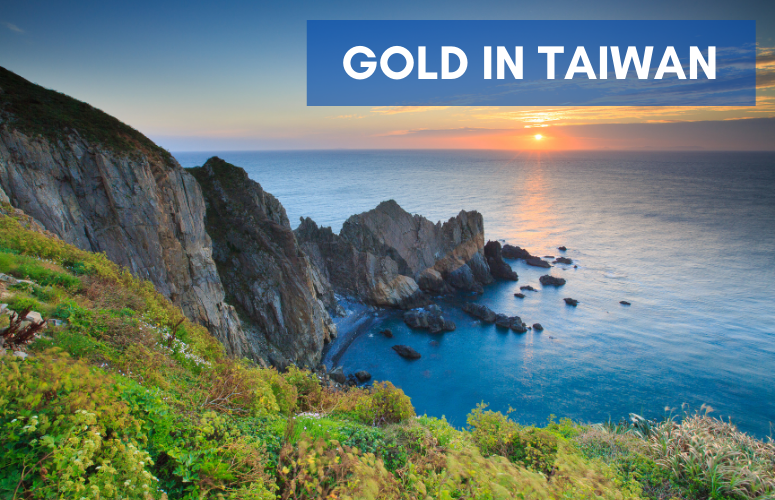
Taiwan’s gold-mining industry peaked during the period it was under Japanese colonization and was centered in today’s Ruifang District, New Taipei City. Only three kilometers apart, two towns stand out in this district as the epicenter of Taiwan’s gold-mining industry – Jiufen and Jinguashi.
Jiufen and Jinguashi may be the only areas with large occurrences of both gold and copper ores but are not isolated. Other areas such as Lanyu (also known as Orchid Island), the East Coastal Range and of course the Central Mountain Range – where the two towns are located – have also been found to contain gold ore.
History of Gold Mining in Taiwan
Taiwan’s gold discovery can be traced back to 1890 during construction of the railroad between Keelung and Taipei. Workers on the project spotted gold sediments on the banks of the Keelung River between Chitu and Patu. However, past records indicate the presence of gold found by local populations as early as the 1600s, during the Qing Dynasty.
News of gold in River Keelung spread quickly on the island and the year 1890 saw the proliferation of activities along the river’s length, with thousands of prospectors panning for gold. By 1892, these activities attracted the attention of the government which promptly set up a bureau to levy tax and regulate prospectors.
The discovery in 1893 of a large outcrop of gold by a farmer in Jinguashi was quickly followed by another find by prospectors at Tatsukeng (also known as “Little Pumpkin Hill”) in 1894, kicking off in earnest, a major gold rush on the island. This was given more impetus when another prospecting party found gold in neighboring Chiufen.
This rush was short-lived when in 1895, under the Treaty of Shimonoseki, Taiwan was annexed by Japan. The Japanese imposed restrictions on mining by locals and during World War II, a prisoner-of-war camp was set up near Jiufen where captured soldiers were used in mining activities. Modern extraction methods using sophisticated mechanical equipment were employed by the Japanese and the Japan Nippon Mining Co. commissioned a large smelting plant which became the largest gold and copper refinery in Asia.
Under the Japanese, Jinguashi became the largest gold producing region in Southeast Asia, bringing great prosperity to the region which acquired the nickname “Little Shanghai.” At the peak of Taiwan’s gold production circa 1938, more than 2,000 tons of gold were produced in Jinguashi – named after the pumpkin-shaped rocks rich in gold that protruded in the hills around the town. Most of the gold was mined on Mt. Jingua, which had nine tunnels drilled beneath it – part of the more than 600 kilometers dug in Jinguashi.
The mines in Jinguashi and Jiufen were closed in 1987 and 1971 respectively after a steady decline in production.

Notable gold mines in Taiwan
The following mines were reputed for their production of gold and at their peak in the mid 1930s were the most notable sources of precious metals in Asia.
Notes
Mountains and rivers with gold in Taiwan
The following mountains and rivers are at the core of the gold mining industry in Taiwan:
The Rundown
The aura of tranquility and bustle of nightlife experienced in Jinguashi, Jiufen and Shuinandong today, may contrast to the early 1900s when the quantity of gold and copper they produced made them the most important sources of precious metals in Asia. These three towns in Ruifang District, New Taipei City, represent the true history of gold mining in Taiwan.
Recent reports of studies estimate that the area around Jinguashi and Jiufen (or Chiufen) may hold more than $6 billion dollars in unexploited gold reserves. The lure of glittering nuggets still nudges prospectors to the island of Taiwan but since turning to tourism, area residents seem uninterested in reviving the mining industry while the government has placed restrictions on mining in the region.
The old mining towns, nestled between tranquil mountains overlooking the glimmering Pacific Ocean, have potential for future development that can only be unlocked by government regulations. For now, a visit to the Gold Ecological Park in Jinguashi will take you on a journey through the glittering gold history of Taiwan.
